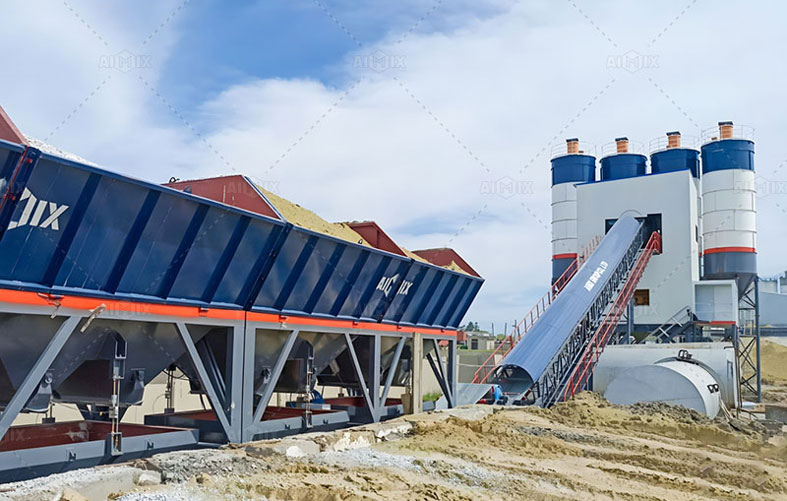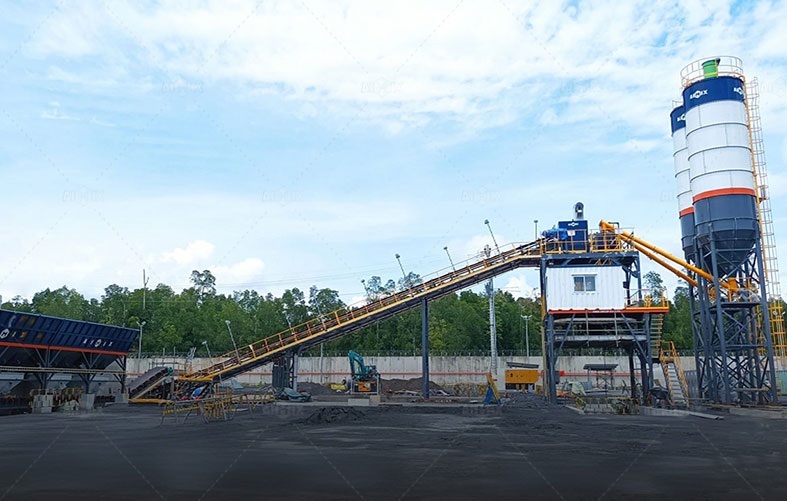The concrete industry has long been perceived as a bastion of brute-force mechanics, where muscle and mortar overshadowed microprocessor precision. Yet, the advent of Industry 4.0 has dismantled this archaic notion, ushering in an era where touchscreen dashboards and artificial intelligence orchestrate concrete batching plants with near-clinical efficiency. No longer confined to manual dials and guesswork, modern ready-mix facilities now operate as neural hubs—processing real-time data, self-correcting mix designs, and predicting mechanical failures before they disrupt production.
This digital metamorphosis is not merely cosmetic; it recalibrates the very economics of concrete manufacturing. Automated systems slash material waste by up to 15%, while predictive maintenance algorithms extend equipment lifespan by 30%. The implications ripple beyond profit margins—smart plants reduce carbon footprints through optimized cement ratios and energy consumption. As urbanization accelerates globally, these technological leaps ensure that concrete production keeps pace without sacrificing sustainability or precision.

The Evolution of Control: From Levers to AI-Driven Dashboards
Touchscreen Command Centers: Intuitive Control at Scale
Gone are the days of labyrinthine control panels requiring specialized training. Contemporary ready mix concrete plants feature expansive 21-inch HMI (Human-Machine Interface) screens that consolidate every operational variable—aggregate moisture levels, mixer torque, admixture dosages—into swipeable workflows. Operators toggle between mix designs with fingertip gestures, while embedded tutorials guide novices through complex sequences.
These interfaces do more than simplify inputs; they contextualize data. Color-coded alerts flag deviations from target slump values, while pop-up diagnostics suggest corrective actions. Some systems even integrate weather APIs, automatically adjusting water content based on real-time humidity forecasts—a feat unimaginable in analog-era plants.
Smart Logic Systems: The Brain Behind the Brawn
Behind the sleek displays lurks a more profound revolution: self-learning algorithms that refine production parameters autonomously. Machine learning models analyze historical performance data, identifying patterns that elude human operators. If a particular aggregate batch consistently requires 2% additional water to achieve optimal workability, the system adapts preemptively.

This intelligence extends to predictive maintenance. Vibration sensors on mixer shafts detect anomalous frequencies—early warnings of bearing wear—and schedule repairs during low-demand windows. The result? A 40% reduction in unplanned downtime, according to a 2023 study by the National Ready Mixed Concrete Association.
Precision Engineering: How Smart Plants Outperform Traditional Methods
Automated Quality Assurance: Eliminating Human Error
Traditional concrete batching hinged on manual sampling and lab tests, introducing delays and inconsistencies. Smart portable conrete plants for sale embed IoT-enabled sensors directly into mixing drums, streaming real-time metrics like air content and temperature to cloud platforms.
Statistical process control (SPC) software cross-references these readings against ASTM/CEN standards, rejecting non-compliant batches before discharge. One European producer reported a 90% reduction in rejected loads after implementing such systems—a staggering ROI given the $500–$1,000 cost of wasted concrete per truck.
Dynamic Mix Optimization: Tailoring Concrete to the Minute
Industry 4.0 enables just-in-time mix adjustments previously relegated to laboratory fantasies. AI algorithms consider variables ranging from traffic delays to jobsite temperatures, tweaking set retarder dosages en route.
Pioneering plants now integrate blockchain-tracked material pedigrees, ensuring that every kilogram of cement carries verified environmental credentials—a boon for LEED-certified projects.
The Future: Autonomous Plants and Decentralized Production
Self-Diagnosing Networks: The Next Frontier
Emerging systems employ digital twins—virtual replicas of physical plants—to simulate operational scenarios. These models predict how equipment will perform under stress loads or alternative mix designs, enabling risk-free experimentation.
Micro-Factories and On-Demand Batching
Modular, truck-mounted batching units equipped with 5G connectivity are redefining “local” production. These deployable plants service remote infrastructure projects, mixing concrete on-site using AI-curated recipes—slashing transport emissions by up to 60%.
The convergence of touchscreen ergonomics and machine intelligence hasn’t just modernized ready-mix mobile batching plant; it’s redefined what’s possible in an industry once resistant to change. As these technologies mature, they promise a future where every cubic meter of concrete embodies both engineering rigor and digital brilliance.